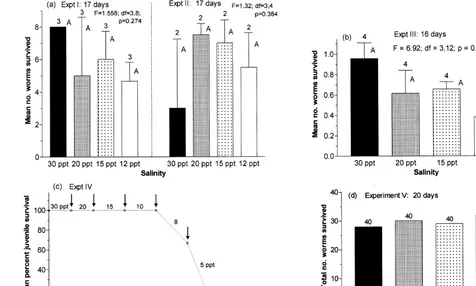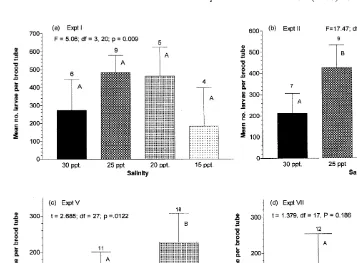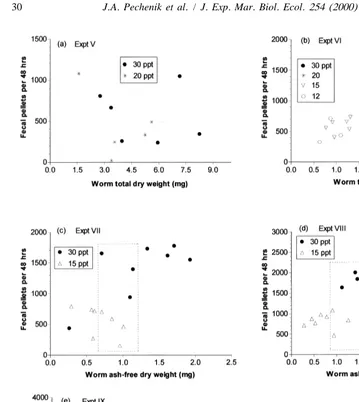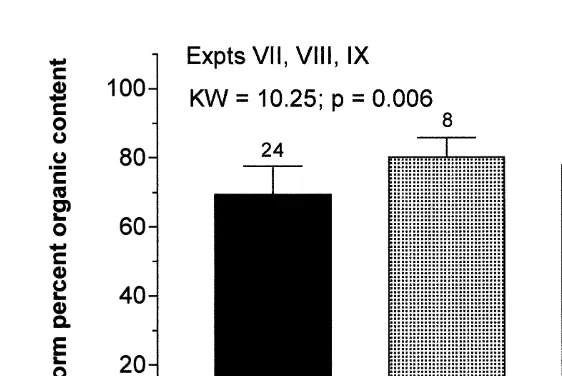Directory UMM :Data Elmu:jurnal:J-a:Journal of Experimental Marine Biology and Ecology:Vol254.Issue1.Nov2000:
Teks penuh
Gambar




Dokumen terkait
At vegetative growth stage (6 weeks after planting), the plant height, the leaf area and the dry weight were signi®cantly reduced at salinities higher than 25 mM NaCl (Table 3) for
Therefore, for walleye pollock larvae, respiration rate increased about two fold with size (dry weight), and the effect of light on respiration rate was size dependent with
The seasonal patterns of daylength and ultraviolet radiation (UVB and UVA) at Williamstown, Victoria, Australia were measured (October 1995–May 1996) and are considered in relation
Chapters 3 to 6 describe important physical and chemical parameters in fish culture, including water treatment and experimental hatchery design.. All the important factors are
The committee concluded that an overall reduction in fishing mortality would be the best immediate ecosystem-based approach to rebuilding and sustaining fisheries and
In experiment 5, 18 hermit crabs that had been evicted from their shell were given a choice between an intact periwinkle shell appropriate for a crab one-half of that crab’s wet
Recently spawned Argopecten purpuratus broodstock were conditioned at two temperatures and fed three different diets (microalgae, microalgae mixed with lipids and microalgae mixed
The two-factor nMDS plot of centroids for each stick (calculated from the principal coordinates of Bray–Curtis dissimilarities) indicated that multivariate differences in the




